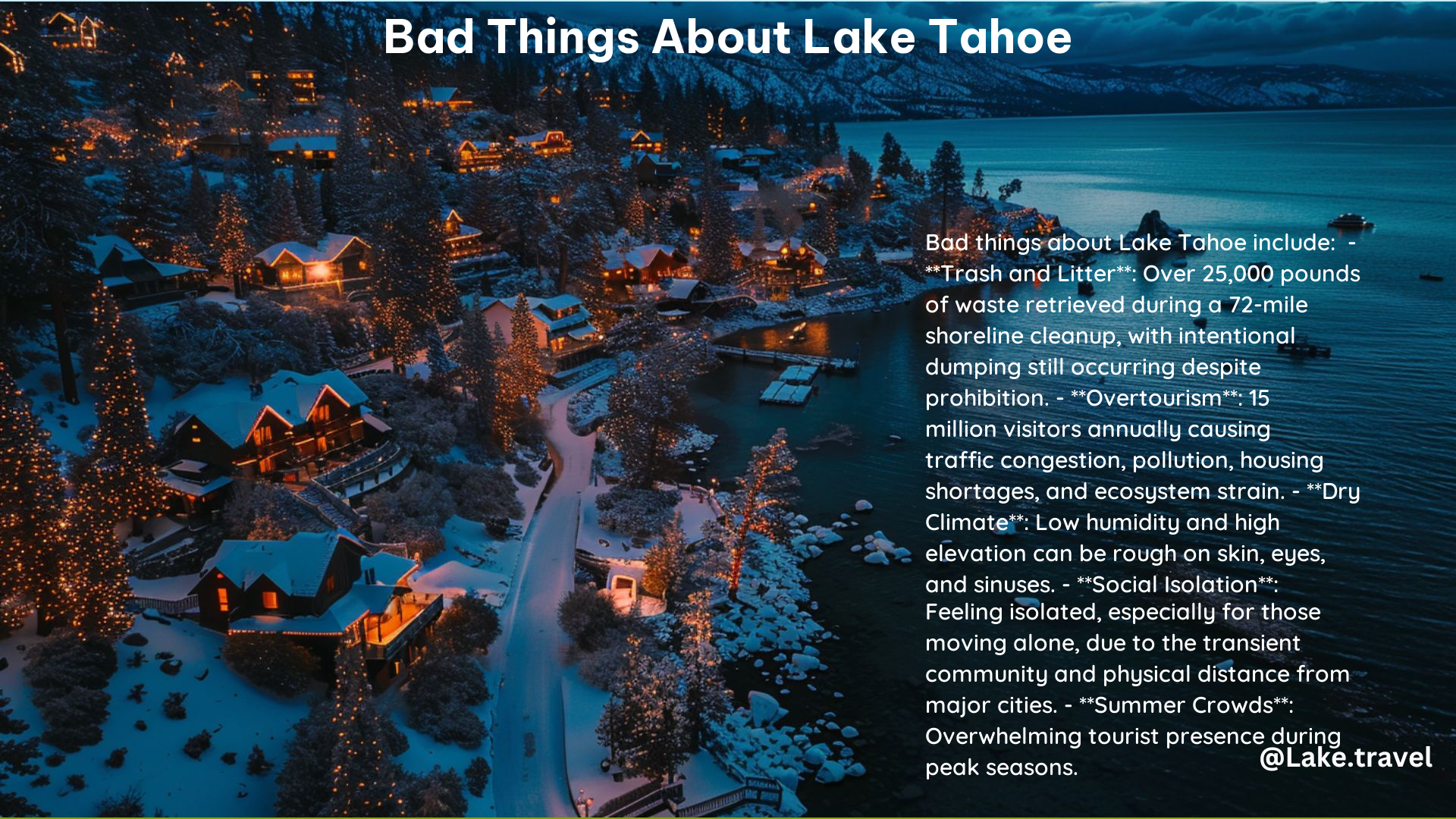Lake Tahoe, a popular tourist destination known for its stunning natural beauty, faces several challenges and negative aspects that impact both residents and visitors. From environmental concerns to infrastructure and tourism-related issues, this article delves into the “bad things” about Lake Tahoe.
Environmental Concerns
Trash and Litter
Lake Tahoe has a significant problem with trash and litter, with intentional dumping and accidental littering contributing to the issue. A recent cleanup effort retrieved over 25,000 pounds of waste from the 72-mile shoreline. This not only detracts from the natural beauty of the lake but also poses a threat to the delicate ecosystem.
Pollution
The influx of tourists leads to increased pollution, including air and water pollution, which strains the ecosystem. The high volume of vehicles, boats, and other recreational activities can contribute to the degradation of the lake’s water quality and air.
Quality of Life

Dry Climate
The low humidity and high elevation of Lake Tahoe can be harsh on skin, eyes, and sinuses, requiring frequent use of moisturizers and chapsticks. This can be a significant inconvenience for both residents and visitors, especially those who are not accustomed to the dry climate.
Isolation
Living in Lake Tahoe can feel socially isolating, especially for those who move there alone. The transient nature of the community, with people often leaving after a season, can make it difficult to form lasting connections. This can be a challenge for those seeking a more stable and connected community.
Infrastructure and Tourism
Overcrowding and Traffic
The large number of tourists (around 15 million annually) leads to traffic congestion and overcrowding, straining local infrastructure. This can result in long wait times, frustration, and a less enjoyable experience for both residents and visitors.
Housing Shortages
The high demand for housing, particularly during peak tourist seasons, can result in housing shortages and increased costs. This can make it difficult for locals to find affordable housing, and can also impact the availability of rental properties for visitors.
Seasonal Economy
The local economy is heavily reliant on tourism, which can lead to seasonal fluctuations in employment and economic activity. This can be a challenge for businesses and residents, who may need to adjust to the ebbs and flows of the tourist season.
Other Challenges
Shoveling and Winter Maintenance
The heavy snowfall in Lake Tahoe requires frequent shoveling and winter maintenance, which can be a significant burden for residents. This can be especially challenging for those who are not accustomed to the demands of living in a snowy climate.
Summer Crowds
The peak tourist season brings large crowds, which can be overwhelming for both residents and visitors. This can lead to long lines, crowded beaches, and a less peaceful and enjoyable experience.
In conclusion, while Lake Tahoe is undoubtedly a stunning and popular destination, it faces a range of challenges that impact both the environment and the quality of life for residents and visitors. From environmental concerns to infrastructure and tourism-related issues, these “bad things” about Lake Tahoe highlight the need for sustainable tourism practices, environmental stewardship, and responsible behavior among all who enjoy this natural wonder.
References:
– Gabriella Viola. (2023). The WORST Things About Living in Lake Tahoe. YouTube.
– Megan Michelson. (2022). What’s lurking in Lake Tahoe? The answer: A ton of trash. Adventure.
– Gabriella Viola. (2021). Living in Lake Tahoe: Pros and Cons.
– CNN. (2023). The monster that feeds and eats away at Lake Tahoe. CNN.
